Review| Deadpool
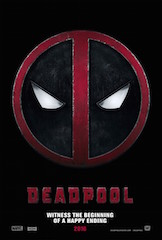 When I initially sat down to comb through my thoughts and notes on the long-anticipated big screen realization of the “Merc with a Mouth”, I was quite aware of the controversy surrounding this movie. Little did I or others here know at Reel World Theology that our most read post ever would be the simple observation to plead for a level playing field when criticizing movies and graphic content within them. Without question, the movie touched a nerve with audiences and has spawned praise, criticism, hysteria, backlash, and a mess-pile of cold hard cash for 20th Century Fox and Marvel. What I am thankful for is our 5 Thoughts on Seeing ‘Deadpool’ article managed to clear the way for yours truly to write a review that avoids getting bogged down in the hysteria of its opening weekend. Instead of focusing on all the outside chatter, there were plenty of things leading up to the movie to talk about.
When I initially sat down to comb through my thoughts and notes on the long-anticipated big screen realization of the “Merc with a Mouth”, I was quite aware of the controversy surrounding this movie. Little did I or others here know at Reel World Theology that our most read post ever would be the simple observation to plead for a level playing field when criticizing movies and graphic content within them. Without question, the movie touched a nerve with audiences and has spawned praise, criticism, hysteria, backlash, and a mess-pile of cold hard cash for 20th Century Fox and Marvel. What I am thankful for is our 5 Thoughts on Seeing ‘Deadpool’ article managed to clear the way for yours truly to write a review that avoids getting bogged down in the hysteria of its opening weekend. Instead of focusing on all the outside chatter, there were plenty of things leading up to the movie to talk about.
One of the more overlooked stories of 2015 was the relatively quiet state of superhero movies in 2015 and how it could be viewed as the calm before the storm of 2016, aka Superhero Movie Madness. Ant-Man seemed to be the test of introducing new superheroes and it did not go well. It debuted to mildly positive reviews but it was largely seen as a routine formula with only a slight twist in adding a large comedic element. Avengers: Age of Ultron likewise was not as enthusiastically received as its superhero team-up predecessor, but it was still one of the most financially successful movies of 2015. We would probably be talking a lot more favorably of the second Avengers movie’s legacy if it hadn’t been for two blockbusters named Jurassic World and Star Wars: The Force Awakens re-writing record books and crossing billion dollar earnings marks faster than any previous movie.
So after a rather “down” year for superhero movies, 2016 opens with probably the strangest and most controversial of the medium in the Valentine’s Day/President’s Day movie, Deadpool. Being a part of the Deadpool novitiate made it necessary for me to investigate further before sitting down at my local theater. For those still looking for a good, short 101 class on Deadpool, I suggest Pop Culture Campfire’s episode The Origin of the Chimichanga. It was helpful in preparing me for the quirks, the villains, the additional characters, and why Deadpool likes WHAM!, Chimichangas, and has a man-crush on Wolverine.
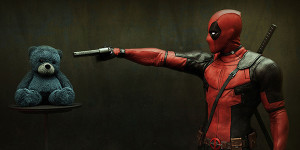 For the uninitiated, the movie does not disappoint in quickly baptizing us into the insanity and humor of Marvel’s motor-mouthed mercenary. A clever and hilarious opening sequence gives us something wholly original and fun to introduce both the meta-humor and the tone of the movie. After these credits, the mouth of Deadpool (Ryan Reynolds) gets rolling and it never stops for the next hour and forty-eight-minute runtime. In the first couple of minutes, the action starts up as Deadpool looks to hunt down Francis, a man that Deadpool holds as responsible for nearly destroying his life. We’re introduced to said antagonist and the two superheroes the studio could afford—a joke Deadpool will make—the CGI Colossus (voiced by Stefan Kapicic) and the superhero with the coolest name—another Deadpool quip—Negasonic Teenage Warhead (Brianna Hildebrand).
For the uninitiated, the movie does not disappoint in quickly baptizing us into the insanity and humor of Marvel’s motor-mouthed mercenary. A clever and hilarious opening sequence gives us something wholly original and fun to introduce both the meta-humor and the tone of the movie. After these credits, the mouth of Deadpool (Ryan Reynolds) gets rolling and it never stops for the next hour and forty-eight-minute runtime. In the first couple of minutes, the action starts up as Deadpool looks to hunt down Francis, a man that Deadpool holds as responsible for nearly destroying his life. We’re introduced to said antagonist and the two superheroes the studio could afford—a joke Deadpool will make—the CGI Colossus (voiced by Stefan Kapicic) and the superhero with the coolest name—another Deadpool quip—Negasonic Teenage Warhead (Brianna Hildebrand).
After a pretty crazy, slo-mo saturated, CGI-heavy opening action sequence, we flashback to begin Deadpool’s origin story and meet Wade Wilson, a former Special Forces operative now turned soldier of fortune/mercenary. This opening establishes Wade’s best friend, Weasel (TJ Miller), and bartender of the establishment that houses these mercenary folk, as well as Wade’s girlfriend and eventual fiancee, Vanessa (Morena Baccarin). After a lengthy montage of Wade and Vanessa’s “courtship”, which is not much more than the talked about and overhyped “sex montage” followed by Wade’s proposal of marriage, their relationship is turned on its head when Wade is given a diagnosis of terminal cancer. In one of the few tender moments of the movie, Vanessa states her commitment to Wade until the end but Wade is focused on memorizing Vanessa’s face; to never forget what she looks like as he stares down death. It is one of the few moments in the movie that is presented at face value and I wish there had been a bit more of it to counter-balance the cartoonish, insane comedy.
Wade makes the fateful choice to not rest on his inevitable end and the loss of the love of his life. After being confronted by a cryptic, suit-wearing man offering him a chance to be cured, he leaves Vanessa in the middle of the night to pursue this mysterious treatment. What transpires next will unlock Deadpool’s origins as well as his motivations for the remainder of the movie.
While this opening synopsis may have been tough to decipher, I love the originality of the movie’s narrative in the slow rollout of Deadpool’s beginnings. It puts a different twist on the normal origin story but gives us the superhero right away; something we often don’t get until the middle of Act 2 in other superhero movies. Along with this clever narrative element, a major strength of Deadpool is how fresh and different the movie is. It breaks the mold of not just franchise movies, but studio movies in general. When dealing with an anti-hero who is far from universally loved by comic book fans and is unknown to the general public, throwing a knuckleball—or is there a pitch called the “goofball”??—with fourth wall breaks, genre-deprecating jokes, and crude humor was the right call.
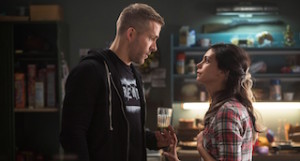 What is so disappointing, however, is the material used to subvert our expectations is mishandled and vastly over-utilized ad absurdum until you are left numb by the constant barrage of nonsense. And I mean nonsense in the best sense. Some of the jokes and fourth wall breaks are instant comedic classics—e.g. the continuity jokes about the MCU and X-men movies. I loved how often the movie seemed to lack a sense of self-seriousness and Reynolds, through Deadpool, was able to poke fun at his previous and notoriously terrible attempt to launch a superhero franchise, Green Lantern. But eventually, the gag starts to wear off, the jokes seem to be one too many to try to draw more laughs, and when the movie has to pause to explain the genesis of Deadpool’s powers—because, after all, it’s a movie about a mutant—the veil is removed and the movie gets extremely dull.
What is so disappointing, however, is the material used to subvert our expectations is mishandled and vastly over-utilized ad absurdum until you are left numb by the constant barrage of nonsense. And I mean nonsense in the best sense. Some of the jokes and fourth wall breaks are instant comedic classics—e.g. the continuity jokes about the MCU and X-men movies. I loved how often the movie seemed to lack a sense of self-seriousness and Reynolds, through Deadpool, was able to poke fun at his previous and notoriously terrible attempt to launch a superhero franchise, Green Lantern. But eventually, the gag starts to wear off, the jokes seem to be one too many to try to draw more laughs, and when the movie has to pause to explain the genesis of Deadpool’s powers—because, after all, it’s a movie about a mutant—the veil is removed and the movie gets extremely dull.
Likewise, for all the interesting character and narrative elements, the direction and camera work is unremarkably boilerplate. Besides the opening credit sequence, which works wonders in introducing the audience to the aesthetic and wit of the movie, the remainder of the running time lacks much originality. If director Tim Miller could have worked in some more animated elements or some more audience-directed dialogue, I think some more interesting camera work could have been employed. For example, Deadpool is notorious for alerting everyone, comic book readers included, that he is a character in a visual medium. It would have been fun for him to play with the lighting, walk off set, or “edit” someone out of a shot. Some sort of element that would have been even more wacky and only characteristic of him being in a movie instead of a comic book. The opportunities were there but the movie seemed to have gotten lost at times in Ryan Reynolds being Deadpool, so they needed more clever and crude jokes and less time to connect with the essence of what makes Deadpool so much fun.
In a similar vein, what really got to me is how little we actually get to connect with Deadpool and the characters in the world. Early on Deadpool opines, this movie is a love story—playing up the romance angle as much as possible given it’s Valentine’s Day weekend release—and then proceeds to the relationship of Wade and Vanessa. However, we get so little time to see them doing anything else but having sex, which is a lazy way to have people fall in love, and when there is an opportunity to connect with their shared pain over Wade’s cancer, it quickly passes by and is hardly brought up the rest of the movie. Their story has the human element, but it gets lost in the humor. And not in a human-like way of laughter being the best medicine, but in an obnoxious, Jim Carrey in The Mask kind of way. An apt comparison, both Carrey and Reynolds are best served in limited doses, but I can see how the humor would play well with teens and wear thin with adults.
As an adult, I wish the movie had embraced a little more humanity. Cancer is one of the most prevalent and horrible afflictions of our age and the movie had an opportunity to be serious as well as fun with “that dragon”, but it chose to merely use it as a stepping stone to splattered brains and masturbation jokes. It pains me to say that all the pieces were there for me to really like this movie, but at the end of the running time, I only kinda liked it. There were some truly great elements and others that left me wishing it was over. Granted, the “Merc with a mouth” is an acquired taste, and if you like extra cheese on your chimichanga, you probably loved this movie. Me? I want some taquitos.


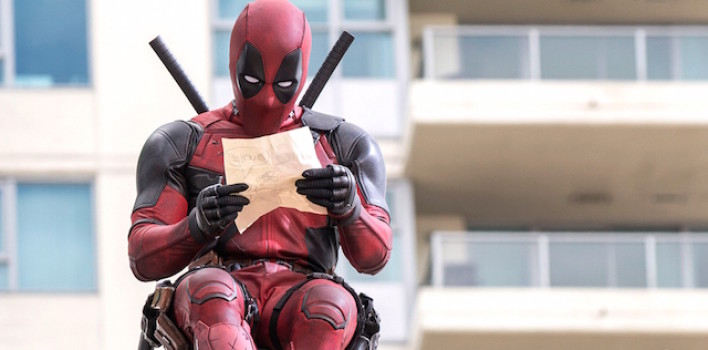
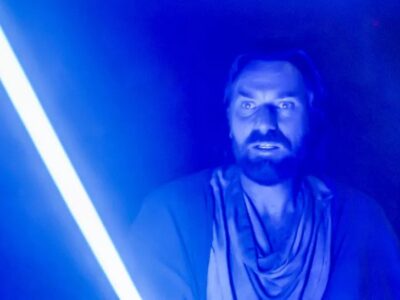
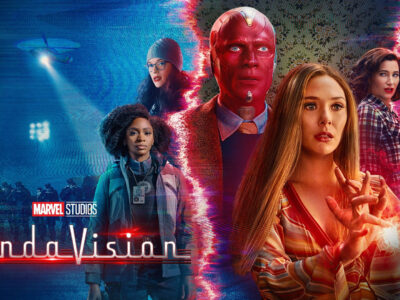
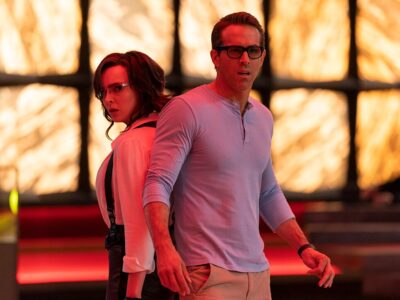


Pingback: Five Thoughts on Seeing ‘Deadpool’ | Reel World Theology
Pingback: #093 – Deadpool and Delicate Discernment | Reel World Theology